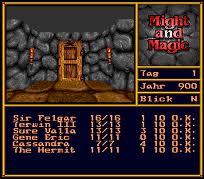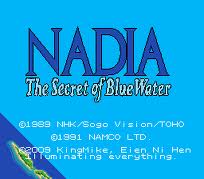Menu
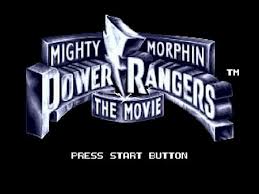
Mighty Morphin Power...
Mighty Morphin Power Rangers is an American live action children's television series that premiered on August 28, 1993, Read more
Mighty Morphin Power Rangers is an American live action children's television series that premiered on August 28, 1993, on the Fox Kids weekday afternoon block. The show is about a group of teenagers who were chosen to protect the world from a group of alien invaders and were given the ability to "morph" into super-powered warriors and to pilot giant robots called "Zords." It was adapted and used stock footage from the Japanese television show Kyōryū Sentai Zyuranger, which was the 16th installment of Bandai Visual and Toei Company's Super Sentai franchise. Both the show and its related merchandise saw unbridled overnight success, becoming a staple of 1990s pop culture in mere months. Under the original name, "Mighty Morphin Power Rangers," the series ran from 1993 to 1995 and spawned the feature film Mighty Morphin Power Rangers: The Movie.
The second and third seasons of the show drew on footage and elements from the Super Sentai series Gosei Sentai Dairanger and Ninja Sentai Kakuranger respectively, though the Zyuranger costumes were still used for the lead cast. Only the mecha and the Kiba Ranger costume (worn by the White Ranger) were retained from Dairanger for the second season, while only the mecha from Kakuranger were featured in the third season. However the Kakuranger costumes were later used for the title characters of the mini-series, Mighty Morphin Alien Rangers. The series was produced by MMPR Productions, distributed by Saban Entertainment, and aired on Fox Kids. The show's merchandise was produced and distributed by Bandai Entertainment.
In 1996, the series was rebranded as the Power Rangers franchise, renaming the series every year after, and using costumes, props, and footage from subsequent Super Sentai series, as well as changing the cast and story line. While an overarching story line would continue until Power Rangers Lost Galaxy, subsequent series after MMPR are not sequels or spin-offs in the traditional sense.
In 2010, a re-version of Mighty Morphin Power Rangers, with a new logo, comic book-referenced graphics, and extra alternative special effects, was broadcast on ABC Kids, and Bandai produced brand new toys to coincide with the series.
Ssega
2015-02-20 23:29:50
417.3k










Mighty Morphin Power Ran...
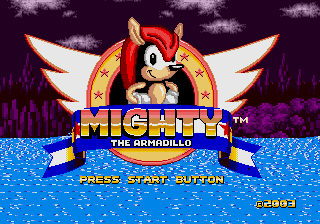
Mighty the Armadillo
Mighty the Armadillo is a hack of Sonic the Hedgehog for the Sega Mega Drive/Genesis by Yuski. The hack features Mighty Read more
Mighty the Armadillo is a hack of Sonic the Hedgehog for the Sega Mega Drive/Genesis by Yuski. The hack features Mighty the Armadillo, who appeared in bothSegaSonic Arcade and Knuckles' Chaotix. Features include new art, palettes and layout for Green Hill Zone.Mighty the Armadillo is one of the oldest ROM hacks, with work on it starting in June 2000 with the help of Gen-SMS. It has since been discontinued in order for Yuski to work with Esrael on Sonic Gaiden.
Ssega
2015-07-29 21:51:27
48.7k










Mighty the Armadillo
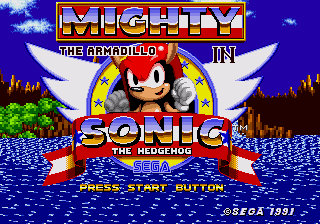
Mighty the Armadillo...
Mighty the Armadillo in Sonic the Hedgehog (aka Mighty in Sonic 1) is a hack of Sonic 1 by E-122-Psi, starring Mighty asRead more
Mighty the Armadillo in Sonic the Hedgehog (aka Mighty in Sonic 1) is a hack of Sonic 1 by E-122-Psi, starring Mighty as the playable character instead of Sonic the Hedgehog. The game is modified to use Mighty's sprites in place of Sonic's, along with several modifications to the player's stats and abilities.
Ssega
2015-07-29 21:57:33
259.5k










Mighty the Armadillo in ...
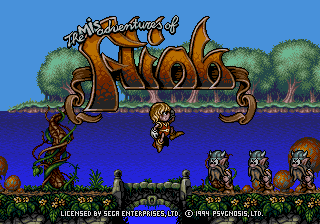
Misadventures of Fli...
Flink (released in North America as The Misadventures of Flink), is a 2D scrolling platform video game developed by PsygRead more
Flink (released in North America as The Misadventures of Flink), is a 2D scrolling platform video game developed by Psygnosis.The Amiga CD32 and Sega CD versions are reliant on CD-ROM media to store large levels, highly detailed graphics, and high-quality music. The Mega Drive version is a cut-down version.Flink is one of the few Amiga CD32 titles not to see a release for the Amiga home computer system, on which the CD32's hardware was based. The majority of titles released for the CD32 were essentially the versions developed for Amiga home computers, taking only minor advantage of the CD-ROM medium with extra levels, CD audio, and/or FMV sequences.The creators, Erwin Kloibhofer and Henk Nieborg, were also responsible for the games The Adventures of Lomax and Lionheart.
Ssega
2015-05-09 07:02:14
64.6k










Misadventures of Flink, ...
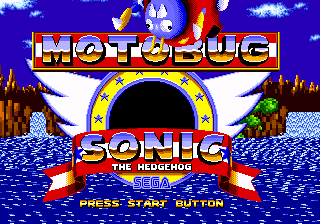
Motobug the Badnik i...
Motobug the Badnik in Sonic the Hedgehog (aka Motobug in Sonic 1) is a hack of Sonic the Hedgehog for the Sega Mega DrivRead more
Motobug the Badnik in Sonic the Hedgehog (aka Motobug in Sonic 1) is a hack of Sonic the Hedgehog for the Sega Mega Drive, by Polygon Jim. As its title suggests, in this hack the main character Sonic the Hedgehog is replaced by Motobug, one of Dr. Robotnik's badniks.So far, some of Sonic's main sprites and animations have been replaced by those of Motobug, Motobug's speed has been decreased (except when powered-up by aSpeed Shoes monitor, which are more numerous), and the sprites of Roller badniks in Spring Yard Zone have been replaced by those of Sonic (referencing a common interpretation by fans that Roller is a robotic impersonation of Sonic, something that officially appeared in later games in the form of Metal Sonic and various others).Of the first release, Polygon Jim stated that he had only tested and confirmed Green Hill Zone (Acts 1-3) for completability. However, upon testing, Katelynn andRGamer2009 reported that other Acts are completable, including:Marble Zone Act 1Spring Yard Zone Acts 1 and 2Labyrinth Zone Acts 1 and 2Star Light Zone Acts 2 and 3Final Zone
Ssega
2015-08-06 15:03:59
184.8k










Motobug the Badnik in So...
Nadia : The Secret of Bl...
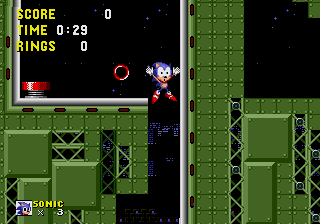
OMG THE RED RINGS
OMG THE RED RINGS is a hack of Sonic the Hedgehog (16-bit) for the Sega Mega Drive/Genesis by Fiz. In this hack, all theRead more
OMG THE RED RINGS is a hack of Sonic the Hedgehog (16-bit) for the Sega Mega Drive/Genesis by Fiz. In this hack, all the rings and monitors are replaced by bouncing red rings. Touch one of them and you get killed. According to many people who posted in the original release thread, this hack is extremely hard, and it is probably impossible to beat several of its acts. However, it was received very well by the general audience, including several renowned members; this granted Tech Membership to Fiz (she's now an Oldbie).
Ssega
2015-08-10 19:27:34
32.6k










OMG THE RED RINGS
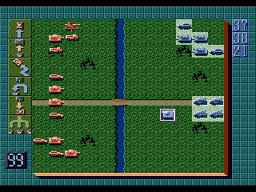
Operation Europe - P...
Operation Europe – Pathto Victory 1939 – 1945
Ssega
2015-02-20 23:29:47
85.8k










Operation Europe - Path ...
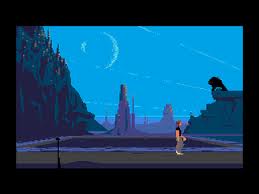
Out of this World
Another World, also known as Out of This World in North America and Outer World (アウターワールド Autā Wārudo?) in Japan, is a 1Read more
Another World, also known as Out of This World in North America and Outer World (アウターワールド Autā Wārudo?) in Japan, is a 1991 cinematic platformer action-adventure game designed by Éric Chahi for Delphine Software. The game tells a story of Lester, a young scientist who, as a result of an experiment gone wrong, finds himself in a dangerous alien world where he is forced to fight for his survival.
Originally developed for the Amiga and Atari ST and later released for the Apple IIGS and DOS platforms, the game was widely ported to other contemporary systems. Later efforts resulted in several game engine recreations for the game that permitted it to run on modern computers, consoles and mobile phones. In 2006, Chahi independently released a 15th Anniversary Edition for Windows which allowed the game to be played on modern computers with original or enhanced visuals; following up in 2011 for its 20th anniversary, ports of the game were prepared for iOS and Android based devices.
Another World was highly innovative in its use of cinematic effects in both real-time and cutscenes, which granted the game praise amongst critics and commercial success. It also influenced a number of other video games and designers.
Ssega
2015-02-20 23:29:19
46.7k










Out of this World
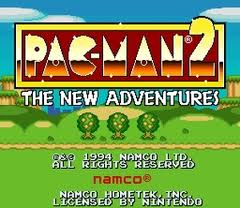
Pac-Man 2 - The New ...
Pac-Man 2 can refer to either one of four games:
Ms. Pac-Man, the second game in the Pac-Man series
Super Pac-Man, the Read more
Pac-Man 2 can refer to either one of four games:
Ms. Pac-Man, the second game in the Pac-Man series
Super Pac-Man, the second game officially made by Namco
Pac-Man 2: The New Adventures, the side-scrolling puzzle game based on Pac-Man
Pac-Man Championship Edition, Toru Iwatani's "official" sequel to the original Pac-Man for the Xbox 360 via Xbox Live Arcade
Ssega
2015-02-20 23:29:19
274.3k










Pac-Man 2 - The New Adve...
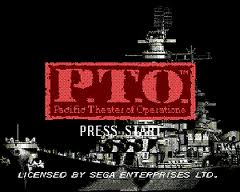
Pacific Theater of O...
The Pacific Theater of Operations is the area of operations of U.S. forces during the Pacific War of 1941-45. A theater Read more
The Pacific Theater of Operations is the area of operations of U.S. forces during the Pacific War of 1941-45. A theater of operations is
a land or sea area, and the airspace above it, established to employ one's forces to neutralize a strategic threat to national or alliance/coalition interests in regional or general conflict; it is part of the theater (of war); normally the nation's highest leadership and the respective theater (of war) commander would designate a part of the theater as the theater of operations in case of a major regional or national emergency and general war; the theater of operations can also be established in the case of a major counterinsurgency effort.
From mid-1942 until the end of the war in 1945, there were two U.S. operational commands in the Pacific:
Pacific Ocean Areas (POA; divided into Central Pacific Area, North Pacific Area and South Pacific Area), commanded by Admiral Chester Nimitz, Commander-in-Chief Pacific Ocean Areas
South West Pacific Area (SWPA), commanded by General Douglas MacArthur, Supreme Allied Commander South West Pacific Area.
In addition, during 1945, General Carl Spaatz commanded the separate U.S. Strategic Air Forces in the Pacific.
Because of the complementary roles of the United States Army and the United States Navy in conducting war in the Pacific theater, there was no single Allied or U.S. commander (comparable to Eisenhower in the European Theater of Operations) in the Pacific. Indeed, the organizational structure was rather complex, requiring the frequent involvement of the Joint Chiefs of Staff and the Army and Navy commanders each reporting to both the Secretary of War and the Secretary of the Navy.
The Japanese Combined Fleet was led by Admiral Isoroku Yamamoto, until he was killed in an attack by U.S. fighter planes in April 1943. Yamamoto was succeeded by Admiral Mineichi Koga (1943–44) and Admiral Soemu Toyoda (1944–45)..
Ssega
2015-02-20 23:29:19
299.7k












